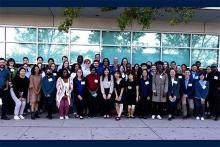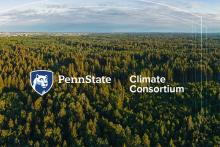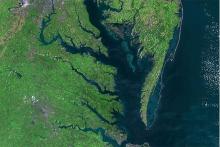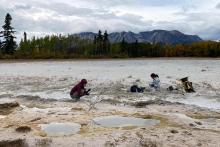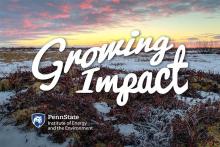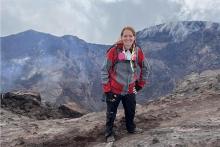Levon Esters, vice provost for graduate education and dean of the Fox Graduate School, with the recipients of the 2024-25 University Graduate Fellowships and Distinguished Graduate Fellowships.
Tushar Mittal, assistant professor of geosciences in the College of Earth and Mineral Sciences at Penn State, was named a 2024 Packard Fellow by the David and Lucile Packard Foundation. Mittal is among this year’s class that features 20 innovative early-career scientists and engineers, each of whom will receive $875,000 over five years to pursue their research.
The Penn State Climate Consortium has awarded funding to four research projects that look to put promising climate solutions into action through interdisciplinary partnerships.
Penn State will be sending its second delegation of students and faculty to COP29, the United Nations’ annual climate meeting, which will be held Baku, Azerbaijan in November. In attendance, Olivia DiPrinzio, an undergraduate student in College of Earth and Mineral Sciences (EMS), Department of Geosciences.
Ray Najjar, affiliate professor of geosciences, was recently awarded funding from the U.S. National Science Foundation to develop a new coupled watershed-estuary model that simulates the transport and fate of major salt ions.
Bridget Reheard, undergraduate student in geosciences, has been selected as Goldwater Scholars for 2024-25.Goldwater Scholars are selected for their potential as leaders in the fields of natural sciences, mathematics and engineering.
$975,000 National Science Foundation Faculty Early Career Development Program (CAREER) grant awarded to Miquela Ingalls, assistant professor and Wilson Faculty Fellow.
In the latest episode of Growing Impact, Anastasia Piliouras discusses how thawing Arctic permafrost is affecting rivers and communities in the region.
Christelle Wauthier, associate professor of geosciences. was appointed as the associate director for the Institute for Computational and Data Sciences.
Ancient, expansive tracts of continental crust called cratons have helped keep Earth’s continents stable for billions of years, even as landmasses shift, mountains rise and oceans form. A new mechanism proposed by Penn State scientists may explain how the cratons formed some 3 billion years ago, an enduring question in the study of Earth’s history.


